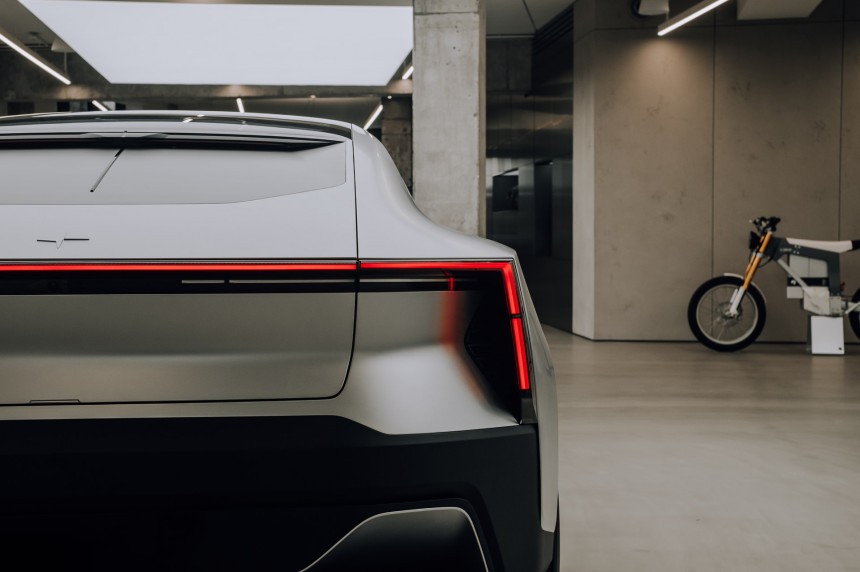It’s understandable if you’re searching for an electric vehicle right now. Gas prices have reached unexpected values in the last couple of months, and this aspect alone made switching from burning fossil fuels to only consuming electricity much, much easier. But don’t forget that you might want to sell the zero-emission car or truck at some point. To make sure you’re not going to lose a lot of money by finding another owner, consider paying for these options. They should be on your next EV!
Right now, the car market finds itself in a tight spot. Inflation, supply chain issues, parts sourcing, geopolitical problems, and a health crisis that doesn’t seem to end for once and for all are putting manufacturers in a tight spot. Unlike Tesla, Rivian, Lucid, or some Chinese automakers, legacy players in this space also have to put up with making big changes inside their companies. This might not look like something of importance at first glance, but any delay eventually leads to more problems for the consumer.
Getting a new car or truck right now might feel like a lottery win, as well. Delivery times have increased this year for those units that do not bring in high-profit margins. Many customers are forced to accept compromises like not having a power trunk or the emergency braking assistant system if they want something new right now. Otherwise, they must put up with at least a couple of months of sitting on the sidelines.
Tesla, for example, informs its customers that a delivery window for a custom Model S Dual Motor AWD takes anywhere from five to eight months. If a customer chooses to go deeper into their pockets for a Model S Plaid, then the delivery window shrinks to weeks or a maximum of two months.
But don’t blame Tesla. Rivian’s doing the same! Some pre-order holders are still waiting for R1Ts, while those who chose to pay the higher price are getting their trucks faster. Moreover, Rivian doesn’t even admit it’s doing this.
That’s the state of the car market right now, and nothing will change it until inflation is under control and the global shipping links are back to normal.
Now let’s assume you got lucky and found the EV that fits your desires best. The dealer or the direct selling manufacturer estimated that it won’t be long until you can drive it. You have the money and are ready to pull the trigger. What should you pay for right now as an extra just to make sure that your new all-electric car or truck isn’t worthless in three, four, or five years? Here are some of the most important picks you can make to avoid a depressing depreciation.
Since EVs are intertwined with software and other hidden technologies, you should first and foremost make sure that your car’s operating system and programs are upgradeable via a wireless connection and that it has the necessary space to download the new patches. This is more important than others might think at first. Electric vehicles will very soon turn into computers with wheels since self-driving and subscribing to in-car entertainment will slowly but surely turn into standard practice.
The next thing that should be sought after is the charging speed. Vehicles like the Porsche Taycan, Tesla Model 3, Kia EV6, and Lucid Air can replenish their batteries at a faster rate thanks to their updated architectures. To avoid any confusion, ask the seller if the car can suck up everything a 150-kW charging station can give it.
Another important characteristic is a battery that can pre-condition itself. This helps with making sure the car can be charged at the maximum possible rate. It will also prolong the lifespan of the battery, and it will help you get more range out of the vehicle over the years despite weather conditions.
To make sure the EV remains relevant in the years to come, you should also check if the vehicle-to-load (V2L) is added. This feature is also known as bi-directional charging. The Rivian R1T, the Ford F-150 Lightning, and the Hyundai Ioniq 5, have this feature. Tesla also added this useful characteristic to its Model 3 and Model Y in 2020, but unlike the Ioniq 5 for example, you can’t charge household appliances with these cars.
Now you know what your new zero-emission car, van, or truck should have so it can retain as much resale value as possible in the upcoming years. If your mind is still not made on what to buy, then you should check the list of the cheapest EVs by miles of range available in the U.S.
Getting a new car or truck right now might feel like a lottery win, as well. Delivery times have increased this year for those units that do not bring in high-profit margins. Many customers are forced to accept compromises like not having a power trunk or the emergency braking assistant system if they want something new right now. Otherwise, they must put up with at least a couple of months of sitting on the sidelines.
Tesla, for example, informs its customers that a delivery window for a custom Model S Dual Motor AWD takes anywhere from five to eight months. If a customer chooses to go deeper into their pockets for a Model S Plaid, then the delivery window shrinks to weeks or a maximum of two months.
That’s the state of the car market right now, and nothing will change it until inflation is under control and the global shipping links are back to normal.
You’ll need a couple of things for your EV
If you’re still on the fence, then you ought to check out the things you should consider before buying an all-electric car, van, or truck. It’ll help you understand the importance of the things listed next.Now let’s assume you got lucky and found the EV that fits your desires best. The dealer or the direct selling manufacturer estimated that it won’t be long until you can drive it. You have the money and are ready to pull the trigger. What should you pay for right now as an extra just to make sure that your new all-electric car or truck isn’t worthless in three, four, or five years? Here are some of the most important picks you can make to avoid a depressing depreciation.
Since EVs are intertwined with software and other hidden technologies, you should first and foremost make sure that your car’s operating system and programs are upgradeable via a wireless connection and that it has the necessary space to download the new patches. This is more important than others might think at first. Electric vehicles will very soon turn into computers with wheels since self-driving and subscribing to in-car entertainment will slowly but surely turn into standard practice.
Keep that battery safe!
You could also enquire if the vehicle supports the 800V platform. If the answer is yes, then your car could charge at 350-kW stations. And that’s fast enough to keep you going on a long road trip. If at a 150-kW charging station, you would normally add 100 miles every nine minutes, at a 350-kW the time would be reduced to around five minutes.Another important characteristic is a battery that can pre-condition itself. This helps with making sure the car can be charged at the maximum possible rate. It will also prolong the lifespan of the battery, and it will help you get more range out of the vehicle over the years despite weather conditions.
To make sure the EV remains relevant in the years to come, you should also check if the vehicle-to-load (V2L) is added. This feature is also known as bi-directional charging. The Rivian R1T, the Ford F-150 Lightning, and the Hyundai Ioniq 5, have this feature. Tesla also added this useful characteristic to its Model 3 and Model Y in 2020, but unlike the Ioniq 5 for example, you can’t charge household appliances with these cars.
Now you know what your new zero-emission car, van, or truck should have so it can retain as much resale value as possible in the upcoming years. If your mind is still not made on what to buy, then you should check the list of the cheapest EVs by miles of range available in the U.S.








